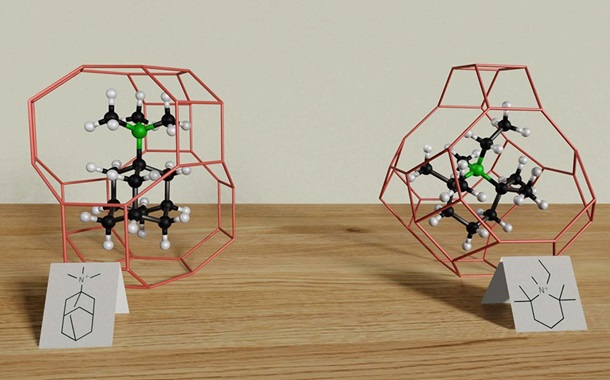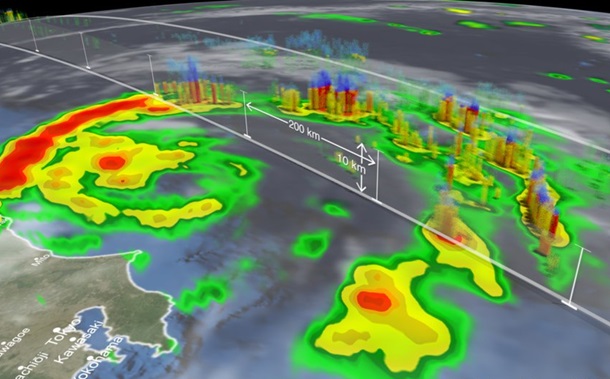Using PID-BP Digital Virtual Reality for Non-Heritage Protection: Recognition and Assessment
Downloads
The objective of this paper is to address the issues of low accuracy and slow real-time performance in the existing algorithm for digitally protecting and evaluating non-heritage culture. To achieve this, we propose an improved method for the identification and assessment of non-heritage digital protection by optimizing the BP neural network using the PID search algorithm. This method aims to enhance the precision and real-time capabilities of the algorithm. We extract a set of feature vectors from the digital protection process of non-heritage culture and construct a recognition and evaluation system. The PID search algorithm is employed to optimize the BP neural network, which helps in establishing a mapping relationship between the feature vectors and the assessment values of non-heritage digital protection. We apply this method to the digital protection of non-heritage culture in Dali Xizhou as a case study. The results show that our method significantly improves the accuracy and real-time performance of the assessment compared to traditional BP and other optimized BP network models. This study provides a novel and effective approach to the digital protection of non-heritage culture.
Downloads
[1] Yang, J., & Xu, C. (2024). Digital Enabling Rural Revitalization: An Innovative Study of Intangible Cultural Heritage in Animation-based Inheritance and Dissemination. Applied Mathematics and Nonlinear Sciences, 9(1), 1674. doi:10.2478/amns-2024-1674.
[2] Zhao, X. (2022). The use of interactive data visualisation technology in cultural digital heritage display using edge computing. International Journal of Grid and Utility Computing, 13(2–3), 118–127. doi:10.1504/IJGUC.2022.124396.
[3] Liu, X., Zhou, W., Dong, Y., Zhu, L., & Chen, N. (2024). Application of Smart Model in the Analysis of Opera Heritage Archiving and Protection. HighTech and Innovation Journal, 5(2), 349–360. doi:10.28991/HIJ-2024-05-02-09.
[4] Hong, H., Jiang, M., & Yen, G. G. (2024). Boosting scalability for large-scale multiobjective optimization via transfer weights. Information Sciences, 670, 120607. doi:10.1016/j.ins.2024.120607.
[5] Gireesh, G. K. (2023). Sustainable preservation and accessibility to cultural heritage in India. Library Hi Tech News, 40(2), 12–14. doi:10.1108/LHTN-02-2022-0029.
[6] Li, M., Wang, Y., & Xu, Y. Q. (2022). Computing for Chinese Cultural Heritage. Visual Informatics, 6(1), 1–13. doi:10.1016/j.visinf.2021.12.006.
[7] Skublewska-Paszkowska, M., Milosz, M., Powroznik, P., & Lukasik, E. (2022). 3D technologies for intangible cultural heritage preservation—literature review for selected databases. Heritage Science, 10(1), 3. doi:10.1186/s40494-021-00633-x.
[8] Mishra, D., & Singhania, V. (2022). Digitalization of Texts: An Analysis with Reference to the Indian Epic Mahabharata. ECS Transactions, 107(1), 19049–19056. doi:10.1149/10701.19049ecst.
[9] He, Z., & Wen, C. (2024). Construction of digital creation development model of intangible cultural heritage crafts in China. Humanities and Social Sciences Communications, 11(1), 1-14. doi:10.1057/s41599-024-04331-4.
[10] Xie, Q., Su, H., Tan, R., Lin, X., & Wang, S. (2021). A review of non-heritage tourism research based on artificial intelligence. Technology and Innovation, 5, 108–109.
[11] Zhao, F., Xing, H., Wang, J., Jia, Z., Chao, X., Wang, J., Liu, J., & Li, Y. (2022). Analytical Investigation of Jiatang Scroll Paintings in the Seventh Year of the Guangxu Era. Coatings, 12(3), 410. doi:10.3390/coatings12030410.
[12] Ping, X., & Tao, T. (2022). Application of Augmented Reality Technology in Immersive Experience of Bo Zhou Intangible Cultural Heritage Wuqinxi. Academic Journal of Humanities & Social Sciences, 5(5), 9. doi:10.25236/ajhss.2022.050509.
[13] Tu, S., & Jiang, X. (2022). The “Tough Road” of Inheriting Intangible Cultural Heritage in the Age of Digital Media: Taking Dunhuang Art Academy as an Example. British Journal of Philosophy, Sociology and History, 2(2), 01–04. doi:10.32996/pjpsh.2022.2.2.1.
[14] Gao, Y. (2023). PID-based search algorithm: A novel metaheuristic algorithm based on PID algorithm. Expert Systems with Applications, 232, 120886. doi:10.1016/j.eswa.2023.120886.
[15] Li, S., Lin, Z., Wu, Y., & Hu, Y. (2025). Measurement, Regional Disparities, and Spatial Convergence in the Symbiotic Level of China’s Digital Innovation Ecosystem. Systems, 13(4), 254. doi:10.3390/systems13040254.
[16] Chohan, A. H., Awad, J., Ismail, M. A., & Arar, M. S. (2024). Integrating Technology and Heritage Design for Climate Resilient Courtyard House in Arid Region. Civil Engineering Journal, 10(3), 928–952. doi:10.28991/CEJ-2024-010-03-018.
[17] Li, J. (2022). Grounded theory-based model of the influence of digital communication on handicraft intangible cultural heritage. Heritage Science, 10(1), 126. doi:10.1186/s40494-022-00760-z.
[18] Li, R. (2024). Paths and practices of intangible cultural heritage in ethnic areas helping rural revitalization—Taking Dali Xizhou as an example. Intelligent Agriculture Guide, 4(2), 176–180.
[19] Li, W., & Wang, X. (2024). Research on Digital Protection and Inheritance Strategy of Non-Heritage Culture Based on Artificial Intelligence. Innovative Design and Intelligent Manufacturing. IOS Press Ebooks, Amsterdam, Netherlands. doi:10.3233/faia241173.
[20] Zheng, X., Jiang, X., Fan, X., Wu, X., & Zhou, Y. (2023). Prediction of Wordle Results Based on Ridge Regression Model and K-means Clustering. Proceedings of the 2nd International Conference on Mathematical Statistics and Economic Analysis, MSEA 2023, May 26–28, 2023. doi:10.4108/eai.26-5-2023.2334479.
[21] Amin, M. Al. (2023). Comparative Analysis of Credit-Strength among Industries of Bangladesh: Altman’s Z-score Measurement. Journal of Sustainable Business and Economics, 6(1), 26–43. doi:10.30564/jsbe.v6i1.5573.
[22] Yu, J., Wellmann, F., Virgo, S., von Domarus, M., Jiang, M., Schmatz, J., & Leibe, B. (2023). Superpixel segmentations for thin sections: Evaluation of methods to enable the generation of machine learning training data sets. Computers & Geosciences, 170, 105232. doi:10.1016/j.cageo.2022.105232.
[23] Li, S., & Zaheeruddin, M. (2024). Adaptive neural network control of a centrifugal chiller system. International Journal of Air-Conditioning and Refrigeration, 32(1), 16. doi:10.1007/s44189-024-00059-7.
[24] Wang, Y., Fei, M., Luan, H., & Chen, Y. (2024). Temperature Control Algorithm for Packaging Heat Sealer Based on IWOA-PID. Chinese Control Conference, CCC, 2328–2333. doi:10.23919/CCC63176.2024.10661401.
[25] Liu, K., & Su, H. (2023). Optimization of BP Neural Network for Wind Power Output Prediction Based on Particle Swarm Optimization Algorithm. Journal of Physics: Conference Series, 2562(1), 012010. doi:10.1088/1742-6596/2562/1/012010.
[26] An, D., Shi, L., & Xu, Y. (2024). Application of NGO-BP neural network in battery life prediction of portable medical devices. Chinese Journal of Medical Instrumentation, 48(3), 293-297. doi:10.12455/j.issn.1671-7104.230529
[27] Zhang, X., & Liu, J. (2023). Fault diagnosis method of civil aircraft air conditioning cooling system based on WPA-BP neural network. Second International Conference on Electronic Information Technology (EIT 2023), 181. doi:10.1117/12.2685828.
[28] Syed, K., & Chekka, R. K. (2023). Hybrid PSO-HHO Optimal Control for Power Quality Improvement in Autonomous Microgrids. Journal Europeen Des Systemes Automatises, 56(3), 513–517. doi:10.18280/jesa.560320.
[29] Dhiman, G., & Kumar, V. (2017). Spotted hyena optimizer: A novel bio-inspired based metaheuristic technique for engineering applications. Advances in Engineering Software, 114, 48–70. doi:10.1016/j.advengsoft.2017.05.014.
- This work (including HTML and PDF Files) is licensed under a Creative Commons Attribution 4.0 International License.






















